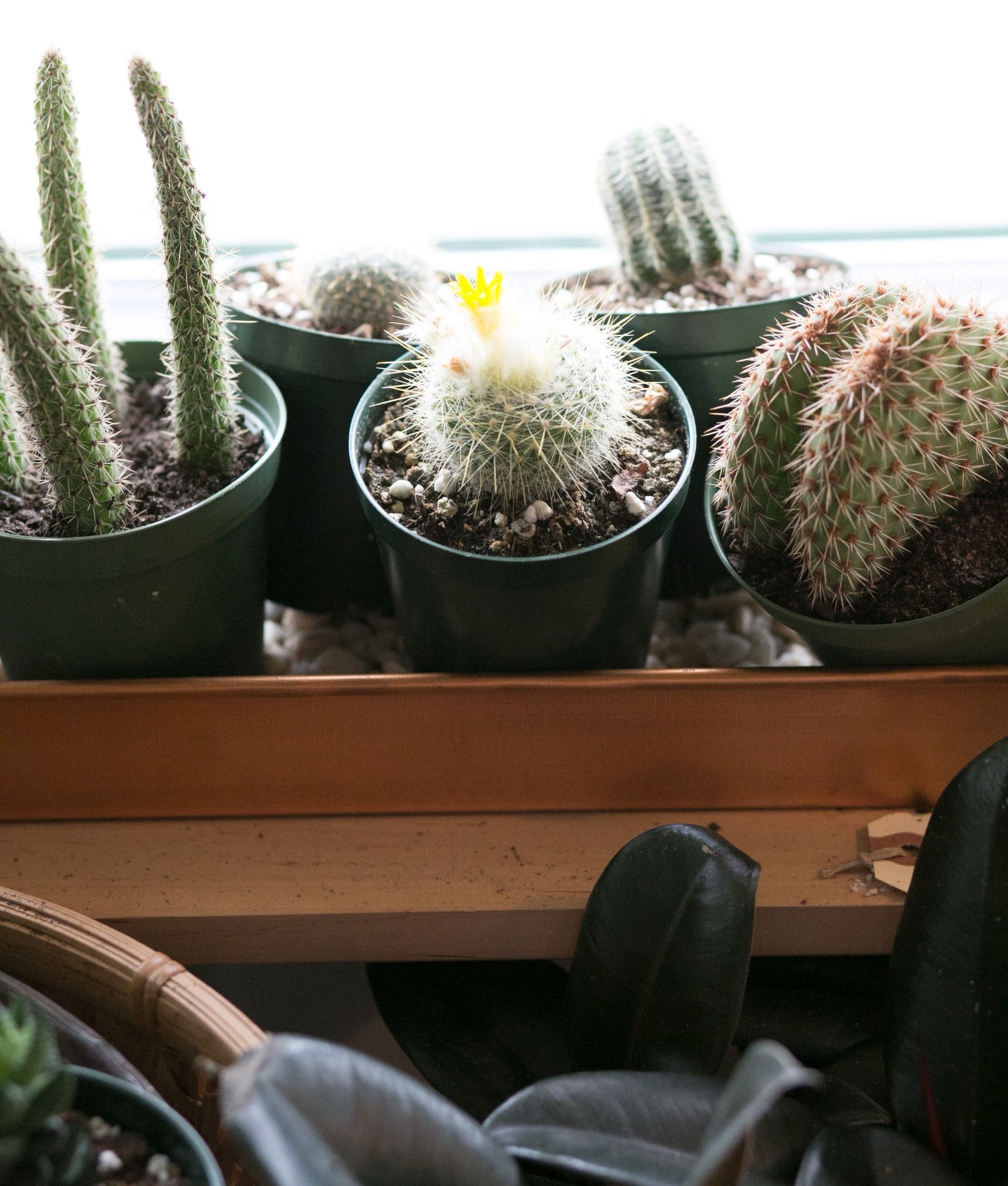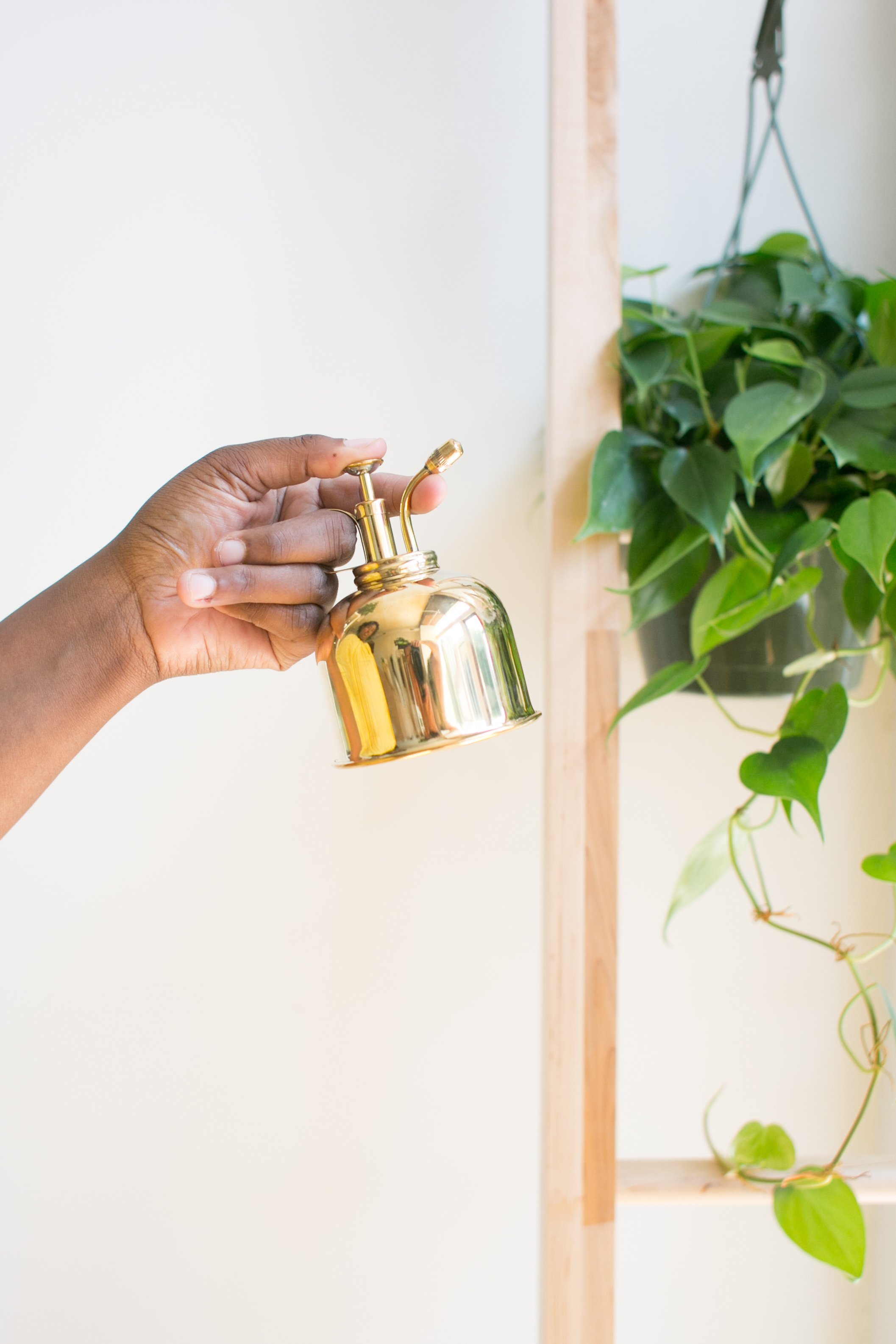A Guide to Houseplants and Placement: Do Windows Really Matter?
“In order to bloom you must grow.”
Having house plants near windows is a great way to bring the outdoors in and add life to your home. But did you know that the placement of your plants can also affect their health and growth? If you answered yes, hot damn. If not, you may want to keep reading to learn a few tips to use on your houseplant journey.
Benefits of Placing House Plants Near Windows:
There are several benefits to placing houseplants near windows, including:
Sunlight: Most houseplants need sunlight to survive and thrive. Placing them near windows allows them to receive the light they need for photosynthesis. A Vital Ingredient for the health of your houseplants.
Sunlight is essential for most houseplants to survive and thrive. Without it, they would not be able to produce the food they need through photosynthesis. This process uses sunlight, water, and carbon dioxide to create glucose, which is the energy source for plants. The amount of sunlight that a houseplant needs will vary depending on the species. Some plants, such as cacti and succulents, are adapted to low-light conditions and can tolerate being placed away from windows. Other plants, such as ferns and orchids, need bright, indirect light to grow well.
If you are not sure how much sunlight your houseplant needs, it is best to err on the side of caution and give it more light than less. A plant that is not getting enough light will often show signs of stress, such as yellowing leaves, stunted growth, and a lack of flowers.
There are a few things you can do to help your houseplants get the sunlight they need.
Place them near windows: This is the best way to ensure that your plants receive the light they need. Choose a window that gets bright, indirect light, such as an east- or west-facing window.
Use artificial lights: If you do not have a window that gets enough sunlight, you can use artificial lights to supplement your plants' light needs. Fluorescent and LED lights are both good options for houseplants.
Rotate your plants: If you have plants that are not getting enough light on one side, rotate them so that all sides get an equal amount of light.
By following these tips, you can help your houseplants get the sunlight they need to stay healthy and thrive.
🪴
🪴
The Sun's Warmth: A Natural Way to Keep Houseplants Thriving
As the colder months draw near, houseplant owners often worry about how to keep their beloved greenery warm and thriving. Fortunately, one of nature's greatest gifts—the sun's warmth—can provide a simple and effective solution. Here's how the sun's warmth can benefit your houseplants and tips for maximizing its effects.
"sunshine is my guest"
"sunshine is my guest"
Regulating Temperature: The sun's rays emit natural heat that helps regulate the temperature around your houseplants. During the winter months when indoor temperatures can drop significantly, placing your plants near sunny windows or in sunrooms can help maintain a warmer and more suitable environment for their growth.
Encouraging Photosynthesis: Sunlight is crucial for photosynthesis, the process through which plants convert light into energy for growth. The sun's warmth not only provides the necessary light but also helps maintain the optimal temperatures required for efficient photosynthesis. This natural process ensures that your plants have the energy they need to thrive, promoting healthy growth and vibrant foliage.
Boosting Metabolism: The sun's warmth acts as a natural stimulant, boosting the plant's metabolism. This increased metabolic activity enhances nutrient absorption, leading to stronger and healthier growth. With the extra energy provided by the sun's warmth, your houseplants can better withstand the stresses of winter and continue to flourish indoors.
Tips for Maximizing the Sun's Warmth:
Choose the Right Spot: Place your houseplants near south- or west-facing windows to maximize exposure to the sun's warmth during the winter months. This positioning ensures that they receive the most sunlight and benefit from the natural heat it provides.
Rotate Your Plants: To ensure even growth and prevent one side from becoming lopsided, rotate your plants regularly. This simple practice allows all sides of the plant to receive equal amounts of sunlight and warmth, promoting balanced growth.
Consider Reflective Surfaces: If your houseplants are not near a sunny window, consider using reflective surfaces, such as mirrors or aluminum foil, to bounce sunlight onto them. This trick can help increase the amount of light and warmth they receive.
Use Supplemental Lighting: In cases where natural sunlight is limited, supplement it with artificial lighting. Grow lights specifically designed for indoor plants can provide the warmth and light needed to keep your houseplants healthy and thriving.
By harnessing the natural warmth of the sun, you can create an ideal environment for your houseplants to flourish during the winter. So, embrace the sun's rays and watch your indoor garden thrive with vibrant growth and beauty all season long.
A few things to consider👉
Humidity: The humidity near windows can be higher than in other parts of your home, which is beneficial for plants that require high humidity levels.
Air circulation: Windows can help to circulate air around your home, which can help to prevent pests and diseases from spreading.
Humidity Regulation: Windows play a crucial role in regulating humidity levels within your home. Areas near windows tend to have higher humidity compared to other parts of the house. This elevated humidity is particularly beneficial for plants that thrive in high-moisture environments, such as ferns, mosses, and certain tropical species. By placing these plants near windows, you can create a microclimate that meets their specific humidity requirements.
Improved Air Circulation: Open windows facilitate air circulation, promoting the movement of fresh air throughout your home. This natural ventilation helps prevent the buildup of stale air, reducing the risk of pest infestations and the spread of diseases. By opening windows strategically, you can create cross-breezes that circulate air effectively, improving overall indoor air quality.
Choosing the Right Plants for Windows
Not all houseplants are created equal. Some plants are better suited for windowsills than others. When choosing plants for windows, consider the following factors:
Light requirements: The amount of sunlight a plant needs will vary depending on the species. Make sure to choose plants that are appropriate for the amount of light your windows receive.
Size: The size of a plant is also important to consider. Make sure to choose plants that will fit comfortably on your windowsill.
Toxicity: Some houseplants are toxic to pets and children. Make sure to choose plants that are safe for your family and pets.
Caring for Houseplants Near Windows
Houseplants that are placed near windows need special care to ensure they stay healthy and thrive. Here are a few tips:
Water regularly: Houseplants near windows can dry out quickly, so it's important to water them regularly.
Fertilize regularly: Houseplants near windows need extra nutrients to help them grow and thrive. Fertilize them regularly according to the package directions.
Rotate plants: Plants that are placed near windows can become lopsided due to the uneven distribution of light. To prevent this, rotate your plants regularly so that they receive even light exposure.
Prune regularly: Houseplants near windows can become overgrown and leggy. To prevent this, prune them regularly to maintain a compact shape.
Following this guide will not only bring lush greenery to your home, but will give you more confidence as you grow your indoor jungle.
As advocates of green living, we at The ZEN Succulent would love to hear your stories about how indoor plants have influenced your life. Share your experiences in the comments below or tag us on social media with your indoor garden photos. Let’s spread the word about the healing power of plants!
Words By The ZEN Succulent
I
nspiring everyone to embrace the world of plants, our collection features articles penned by The Sill's team of seasoned plant experts. Covering a range of plant care topics, because we truly believe Plants Bring Life, Joy and Inspirations™ .
Whatever it is, the way you tell your story online can make all the difference.






